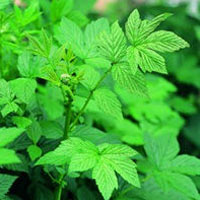Meadowsweet
 © Martin Wall
© Martin WallParts Used & Where Grown
Meadowsweet is found in northern and southern Europe, North America, and northern Asia. The flowers and flowering top are primarily used in herbal preparations, although there are some historical references to using the root.
- Reliable and relatively consistent scientific data showing a substantial health benefit.
- Contradictory, insufficient, or preliminary studies suggesting a health benefit or minimal health benefit.
- For an herb, supported by traditional use but minimal or no scientific evidence. For a supplement, little scientific support.
Our proprietary “Star-Rating” system was developed to help you easily understand the amount of scientific support behind each supplement in relation to a specific health condition. While there is no way to predict whether a vitamin, mineral, or herb will successfully treat or prevent associated health conditions, our unique ratings tell you how well these supplements are understood by the medical community, and whether studies have found them to be effective for other people.
For over a decade, our team has combed through thousands of research articles published in reputable journals. To help you make educated decisions, and to better understand controversial or confusing supplements, our medical experts have digested the science into these three easy-to-follow ratings. We hope this provides you with a helpful resource to make informed decisions towards your health and well-being.
This supplement has been used in connection with the following health conditions:
| Used for | Amount | Why |
|---|---|---|
Common Cold and Sore Throat | Refer to label instructions | Meadowsweet is reputed to break fevers and to promote sweating during a cold or flu. It also has a mild anti-inflammatory effect and a pain-relieving effect. |
Influenza | Refer to label instructions | The salicylates in meadowsweet give it a mild anti-inflammatory effect and the potential to reduce fevers during a cold or flu. |
Osteoarthritis | Refer to label instructions | Meadowsweet has been historically used to treat complaints of the joints and muscles. The herb contains salicylates, chemicals related to aspirin, that may account for its ability to relieve osteoarthritis pain. |
Rheumatoid Arthritis | Refer to label instructions | Meadowsweet has been used historically for a wide variety of conditions, including treating rheumatic complaints of the joints and muscles. |
Traditional Use (May Not Be Supported by Scientific Studies)
Meadowsweet was used historically by herbalists for a wide variety of conditions, including treating rheumatic complaints of the joints and muscles.1 Nicholas Culpeper, a 17th-century English pharmacist, mentioned its use to help break fevers and promote sweating during a cold or flu. Traditional herbal references also indicate its use as a diuretic for people with poor urinary flow. It was also thought to have antacid properties and was used by herbalists to treat stomach complaints, including heartburn.
Copyright © 2024 TraceGains, Inc. All rights reserved.
Learn more about TraceGains, the company.
The information presented by TraceGains is for informational purposes only. It is based on scientific studies (human, animal, or in vitro), clinical experience, or traditional usage as cited in each article. The results reported may not necessarily occur in all individuals. Self-treatment is not recommended for life-threatening conditions that require medical treatment under a doctor's care. For many of the conditions discussed, treatment with prescription or over the counter medication is also available. Consult your doctor, practitioner, and/or pharmacist for any health problem and before using any supplements or before making any changes in prescribed medications. Information expires December 2024.
